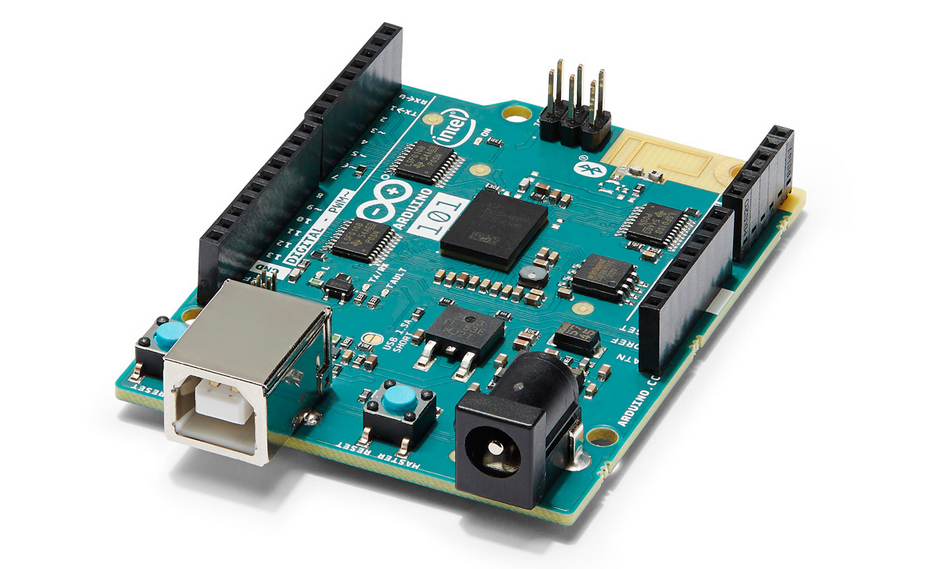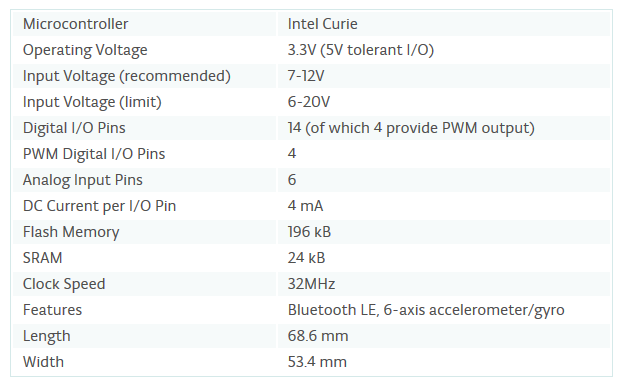
Picture this: after years of observing mommy or daddy tinker away with his/her electronics maker projects in the off-limits side of the house known as the “workshop,” your child is finally developing tech curiosity. Fondly recalling the instance that your own maker spirit was set ablaze, you decide to cultivate that same interest in lil’McDermitt, Pandora, or whatever hyper-trendy name you’ve chosen for your progeny. What better way to do so at the most basic level than through the Arduino 101— a new entry-level development board equipped with Intel’s Curie chip.
The Arduino 101 provides a BASIC-like interpreted interface to access low-level internals, allowing the user to access the integral features of assembly code without worrying about the assembler. Pair it up with a bevy of expansion shields to integrate things like heart rate monitors and Bluetooth and dazzle Atticus and Eleanora with homemade wearables.
Unlike Raspberry Pi and other dev boards aimed at a younger audience, the Arduino 101 features all the flexibility and creative freedom allotted by Arduino’s feature-enriching shields, while integrating the robustness of Intel’s new 32-bit Quark microcontroller-powered Curie module, that lets users add brains to just about anything.
The Curie module features 384 kB of flash memory, 80 kB of SRAM (24kB available for sketches), an integrated DSP sensor hub, Bluetooth low energy, and a six-axis accelerometer and gyroscope sensor. There’s even a 128-node neural network to integrate a little bit of machine learning.
So how much do all these features cost? The Arduino Curie will retail at $30 when it’s eventually released in 2016.
Full tech specs below:

Source: ExtremeTech
Advertisement
Learn more about Electronic Products Magazine





